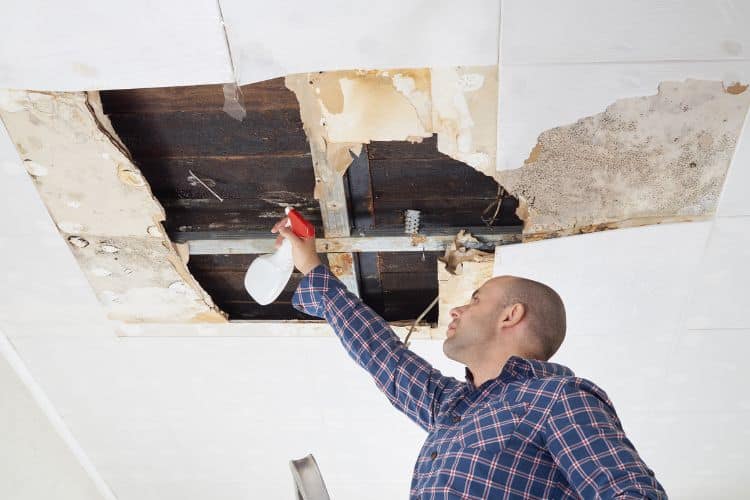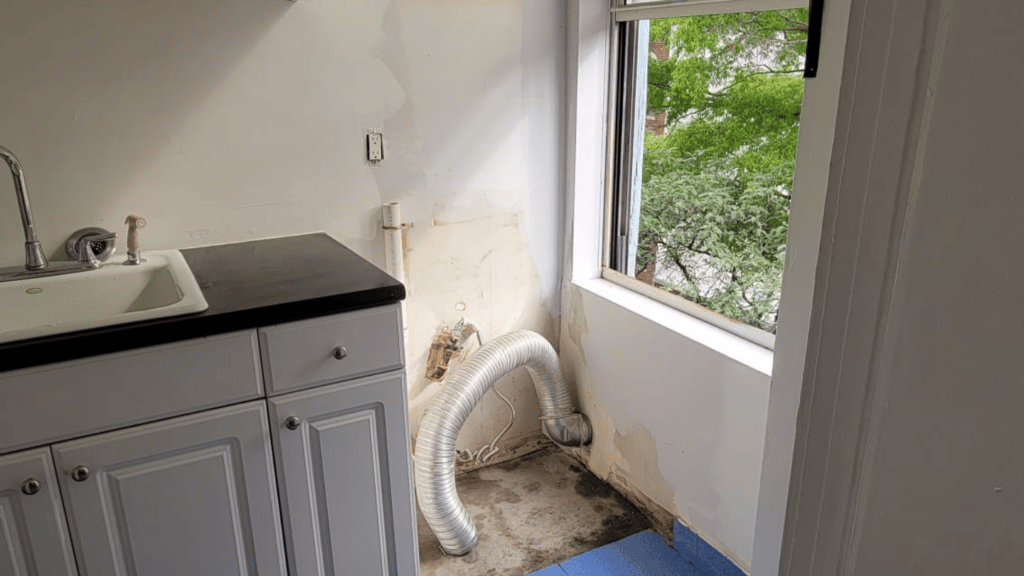Mold is a common household problem that can cause significant health issues and damage to your property if left unattended. Mold thrives in damp and humid environments, and its spores can spread rapidly, posing health risks to you and your family. In this comprehensive guide, we will explore the essential steps for mold-proofing your home, ensuring long-term prevention of mold growth. From identifying problem areas to implementing effective prevention strategies, we’ve got you covered. Let’s dive in and create a mold-free environment for a healthier and safer home.

Mold-Proofing Your Home: Essential Steps for Long-Term Prevention
Understanding Mold: What is it, and How Does it Grow?
Before we delve into mold-proofing techniques, it’s essential to understand what mold is and how it grows. Mold is a type of fungus that thrives in moist and warm conditions. It reproduces by releasing tiny spores into the air, which can settle and grow in various surfaces, leading to mold infestations. By grasping the basics of mold growth, we can better protect our homes from its harmful effects.
Identifying Problem Areas: Where Does Mold Usually Grow?
Mold can manifest in different areas of your home, making it vital to identify problem areas. Common places for mold growth include bathrooms, basements, kitchens, and areas with water leakage or high humidity levels. By knowing where mold is likely to occur, you can be proactive in preventing its development and take prompt action if you notice any signs of mold.
Controlling Indoor Humidity: Keeping Moisture at Bay
One of the most effective ways to prevent mold growth is by controlling indoor humidity levels. Using dehumidifiers in damp areas and ensuring proper ventilation can significantly reduce the moisture content in the air. By keeping humidity in check, you create an unfavorable environment for mold to thrive, safeguarding your home from potential infestations.
Proper Ventilation: Let Fresh Air In
Proper ventilation plays a crucial role in mold prevention. Regularly opening windows and using exhaust fans in bathrooms and kitchens can help in circulating fresh air and expelling dampness. Adequate ventilation not only prevents mold but also promotes overall indoor air quality, benefiting your family’s health.
Sealing Cracks and Leaks: Preventing Water Intrusion
Water intrusion through cracks and leaks can lead to hidden mold growth behind walls and under floors. Regularly inspecting your home for any signs of water intrusion and promptly sealing cracks and leaks can go a long way in mold-proofing your home. Remember, prevention is always better than dealing with mold-related issues later.
Using Mold-Resistant Products: Building with Prevention in Mind
When renovating or building your home, opt for mold-resistant materials. Mold-resistant drywall, paints, and insulation are excellent choices to minimize the risk of mold growth. These products are specifically designed to deter mold from taking hold, providing an added layer of protection for your home.
Cleaning and Drying Wet or Damp Areas: Quick Action Matters
If any areas of your home get wet or damp, take immediate action to dry them thoroughly. Whether it’s a spill, a leak, or water damage from flooding, fast and effective drying can prevent mold from gaining a foothold. Don’t wait; act promptly to safeguard your home and belongings.
Using Air Purifiers: Keeping the Air Clean
Investing in high-quality air purifiers with HEPA filters can significantly reduce the number of airborne mold spores. These purifiers can trap even the tiniest spores, ensuring cleaner air and a healthier living environment for you and your family.
Regular Mold Inspections: Stay Vigilant
Performing regular mold inspections is essential to detect mold growth early on. Consider hiring a professional mold inspector to conduct a thorough assessment of your home periodically. Early detection can prevent minor mold issues from turning into major problems.
Landscaping for Mold Prevention: Proper Yard Maintenance
The exterior of your home can also influence mold growth indoors. Ensure proper landscaping and drainage to prevent water from accumulating near the foundation. Grading the ground away from your home’s base and installing gutters and downspouts can help direct water away, minimizing the risk of mold infiltration.
Mold-Proofing Your Bathroom: The Wet Zone Challenge
Bathrooms are notorious for mold growth due to their constant exposure to moisture. Implementing specific mold-proofing measures in your bathroom can help combat this issue effectively. From using mold-resistant materials to proper ventilation, we will explore bathroom-specific tips for long-term mold prevention.
Preventing Attic Mold: Overcoming the Hidden Menace
Attics are often neglected when it comes to mold-proofing. However, they are susceptible to mold growth, especially if there are roof leaks or insufficient ventilation. Discover how to keep your attic mold-free and protect your home’s structural integrity.
Kitchen Mold Prevention: Keeping the Heart of Your Home Safe
Kitchens, with their cooking activities and water usage, are at risk of mold development. Learn how to mold-proof your kitchen and maintain a healthy cooking environment for your family.
Basement Mold-Proofing: Tackling the Most Vulnerable Area
Basements are highly prone to moisture, making them ideal breeding grounds for mold. Explore effective strategies to mold-proof your basement, transforming it into a dry and safe space.
Crawl Space Mold Prevention: The Often Forgotten Zone
Crawl spaces are often overlooked, but they can become major sources of mold infestations. Find out how to mold-proof your crawl space and protect your home’s foundation and indoor air quality.
Mold-Proofing Your Home’s Exterior: The First Line of Defense
Preventing mold from entering your home starts with its exterior. From inspecting and maintaining siding to managing landscaping, we will cover essential mold-proofing measures for the outside of your home.
Dealing with Floods and Water Damage: Swift Action to Prevent Mold
Floods and water damage can quickly lead to mold issues if not addressed promptly. Learn how to handle these emergencies effectively and protect your home from mold growth.
Humid Climate Mold-Proofing: Special Considerations
Living in a humid climate poses unique challenges for mold prevention. Uncover specialized strategies to keep your home mold-free in high-humidity regions.
Winter Mold Prevention: Battling Cold-Weather Mold
Winter brings its own set of mold-related challenges. Explore tips to prevent mold growth during the colder months and maintain a cozy, mold-free home environment.
Mold-Proofing Your HVAC System: Cleaner Air, Mold-Free Living
Your HVAC system can inadvertently contribute to mold growth if not adequately maintained. Discover how to keep your heating and cooling system mold-proof and promote cleaner indoor air quality.
DIY vs. Professional Mold-Proofing: Making the Right Choice
Deciding between DIY mold-proofing and hiring professionals can be daunting. We’ll help you weigh the pros and cons to make an informed decision that suits your budget and needs.
Mold-Resistant Paints and Coatings: An Extra Layer of Defense
Applying mold-resistant paints and coatings on your walls and ceilings can provide an additional layer of defense against mold growth. These specialized products contain antimicrobial properties that discourage mold and mildew, making them a valuable investment for a mold-free home.
Educating Your Family: Promoting Mold Awareness
Mold prevention is a collective effort, and educating your family about mold awareness is crucial. Teach them about the importance of cleanliness, proper ventilation, and prompt action in case of leaks or water damage. By fostering a mold-conscious environment, everyone can contribute to keeping your home mold-free.
DIY Mold-Proofing Solutions: Cost-Effective and Practical
For budget-conscious homeowners, DIY mold-proofing solutions can be both cost-effective and practical. From weather-stripping windows to installing exhaust fans, we’ll share easy-to-follow DIY techniques that can significantly reduce the risk of mold growth.
Understanding Mold Remediation: Dealing with Infestations
Despite your best efforts, mold infestations can still occur. Understanding the mold remediation process is crucial to address and resolve mold issues effectively. We’ll outline the steps involved in mold remediation and the importance of hiring trained professionals for severe mold problems.




